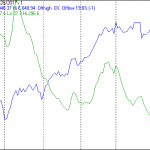Higher interest rates will triple the interest on the federal debt to $830 billion annually by 2026, will hurt workers and young voters, and could bankrupt over 20% of US corporations, according to the IMF. The move is not necessary to counteract inflation and shows that the Fed is operating from the wrong model.
Responding to earlier presidential pressure, the Federal Reserve is expected to raise interest rates this week for the third time since November, from a fed funds target of 1% to 1.25%. But as noted in The Guardian in a March 2017 article titled “Trump Is Set to Win the Battle on Interest Rates, but US Economy Will Pay the Price”:
An increase in the base rate, however small, will tighten the screw on younger voters and some of the poorest communities who voted for him and rely on credit to get by.
More importantly for his economic programme, higher interest rates in the US will act like a honeypot for foreign investors . . . . [S]ucking in foreign cash has a price and that is an expensive dollar and worsening trade balance. . . . It might undermine his call for the repatriation of factories to the rust-belt states if goods cost 10% or 20% more to export.
In its Global Financial Stability report in April, the International Monetary Fund issued another dire warning: projected interest rises could throw 22% of US corporations into default. As noted on Zero Hedge
the same month, “perhaps it was this that Gary Cohn explained to Donald Trump ahead of the president’s recent interview with the WSJ in which he admitted that he suddenly prefers lower interest costs.”
But the Fed was undeterred and is going expected to raise interest rates. Besides raising the fed funds rate to a target of 3.5% by 2020, it is planning to unwind its massive federal securities holdings beginning as early as September. Raising interest rates benefits financial institutions, due to a rise in interest on their excess reserves and net interest margins (the difference between what they charge and what they pay to depositors). But borrowing costs for everyone else will go up (rates on student loans are being raised in July), and the hardest hit will be the federal government itself. According to a report by Deloitte University Press republished in the Wall Street Journal in September 2016, the government’s interest bill is expected to triple, from $255 billion in 2016 to $830 billion in 2026.
The Fed returns the interest it receives to the Treasury after deducting its costs. That means that if, rather than dumping its federal securities onto the market, it were to use its quantitative easing tool to move the whole federal debt onto its own balance sheet, the government could save $830 billion in interest annually – nearly enough to fund the president’s trillion dollar infrastructure plan every year, without raising taxes or privatizing public assets.













Leave A Comment